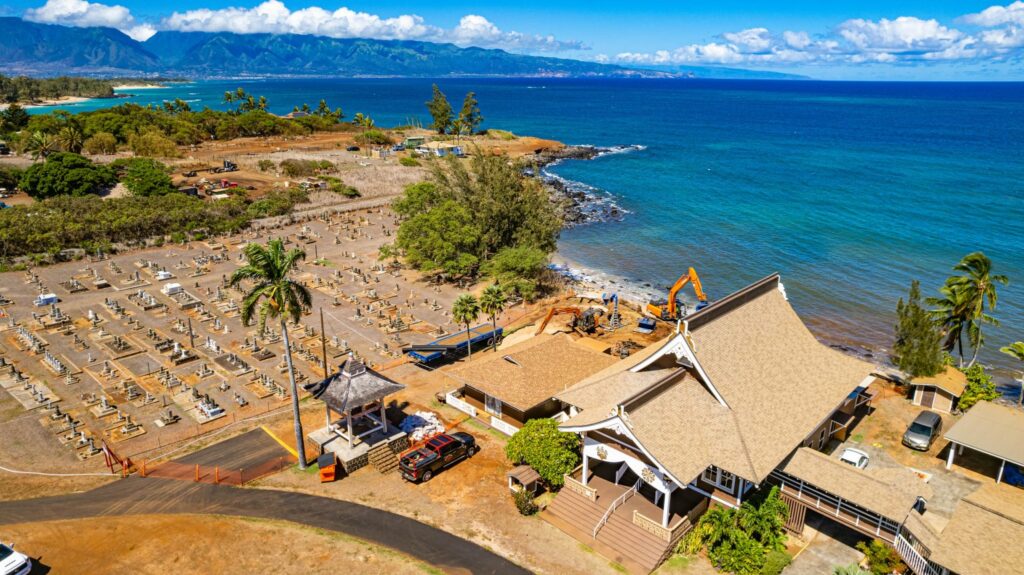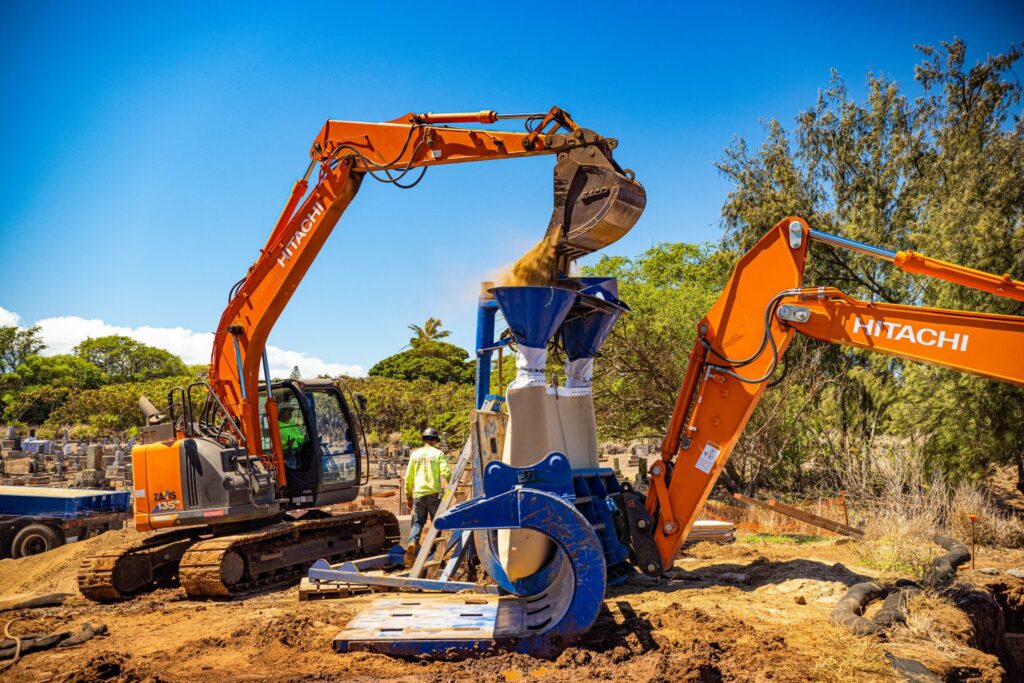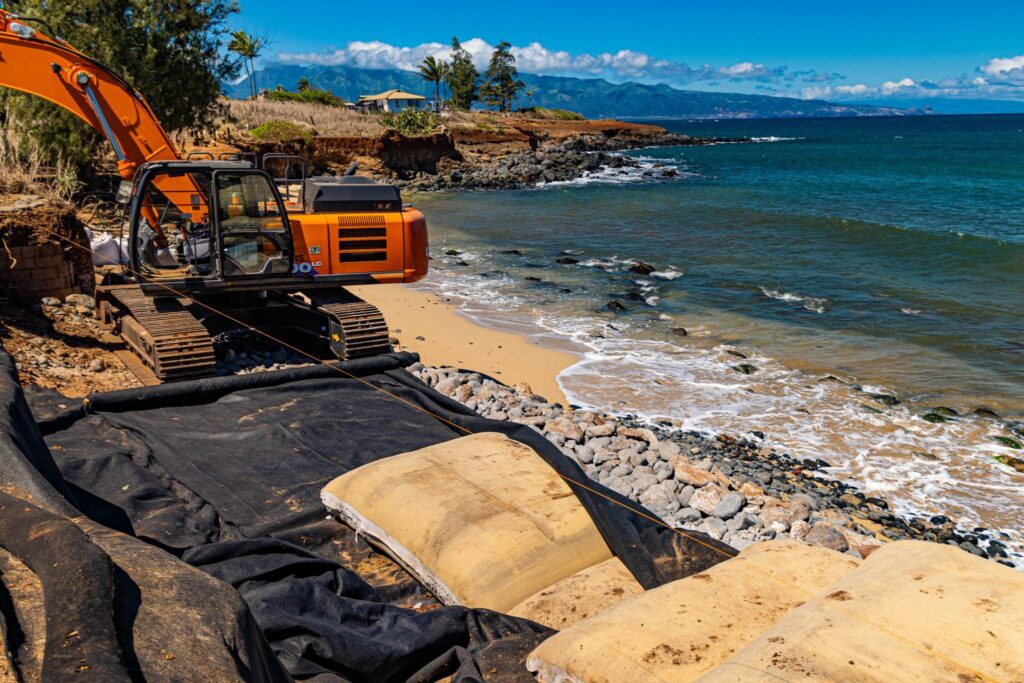Climate Change Toolkit: Mantokuji Bay and the Paia Mantokuji Temple
In recent years, the impact of coastal erosion on natural resources, property and infrastructure has intensified across the Hawaiian Islands. By 2012, 13 miles of beaches around the state had vanished, and 70% of the remaining beaches were already under threat. Located on Maui’s north shore, Mantokuji Bay is a unique place suffering the common impacts of climate change and environmental degradation.
Oceanit has been working with the Mantokuji Mission Board of Directors at the Paia Mantokuji temple to devise a solution for the bay’s eroding beach and collapsing coastal bluffs. Oceanit’s RiSE team has conducted engineering assessments and erected a temporary erosion control measure seaward of the historic temple to protect the temple and the public safety. In addition, Oceanit aided in the permitting process and consulted with the State and Maui County government agencies on long-term strategies.
Since the temple’s construction, the property has lost at least half an acre of land. According to a study by the Coastal Geology Group at the University of Hawai’i, the Mantokuji Bay shoreline is moving inland at an average rate of about 1.6 feet per year. Recently this rate seems to have accelerated and the pressure is on us, as a community, to find a solution.
The primary goal of the Climate Change Toolkit project is to increase public awareness of coastal erosion caused by climate change and sea level rise. To accomplish this goal, a team of mentors worked with student interns to empower them with the knowledge and tools to understand climate change, sea level rise and its impacts on our coastal communities. The students were provided training necessary for critical thinking and analysis, communication and team collaboration, data gathering and problem solving with the use of technology to consider possible adaptation pathways. The intention is for these students to become “ambassadors” and create awareness on the effects of climate change on Hawai’i’s coastline and their communities.
A second goal is to develop a toolkit that will help students and their community understand how climate change and sea level rise are affecting our coastlines. To accomplish this goal, the students were provided the opportunity to learn technical skills through hands-on experiences and active engagement with mentorship guidance and support. The skillset includes biological assessment, water quality sampling, beach sand evaluation, topographic mapping, ocean current measurements and real-time coastal monitoring. The student interns used the gathered data to develop a better understanding and new insight of the dynamics in Mantokuji Bay.
The Toolkit framework applied to the pilot project at Mantokuji Bay can be used to study and create a community discussion on sea level rise and the coastal erosion threats for any of Hawai’i’s unique coastal communities.
Preserving Paia Mantokuji
On behalf of the Oceanit Research Foundation Board members we thank the leaders of the Pā’ia Mantokuji Soto Mission (Mantokuji), the University of Hawai’i Maui College, the student interns and their mentors from Oceanit for their participation on this Project.
We also thank the Hawai’i Technology Development Corporation for its support and the Hawai’i State Legislature for providing the grant to conduct this project. To learn more about how the Toolkit combines science and technology, team collaboration, and community building skillsets, click below:



